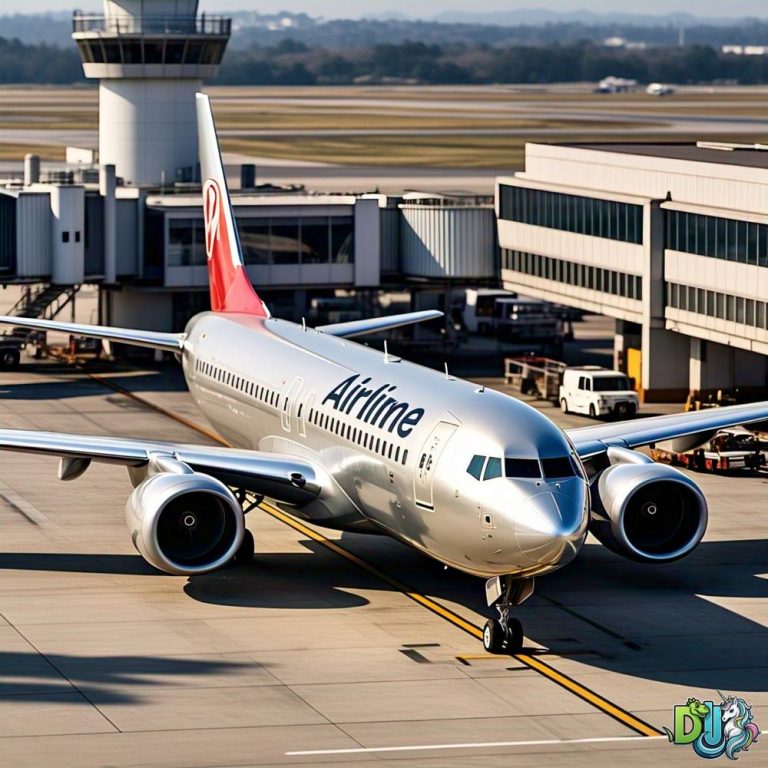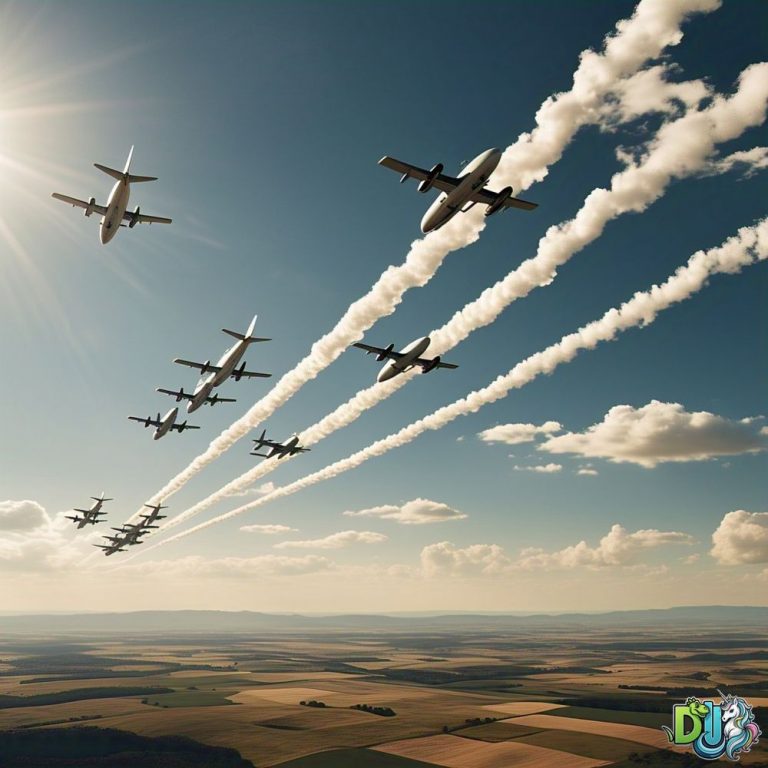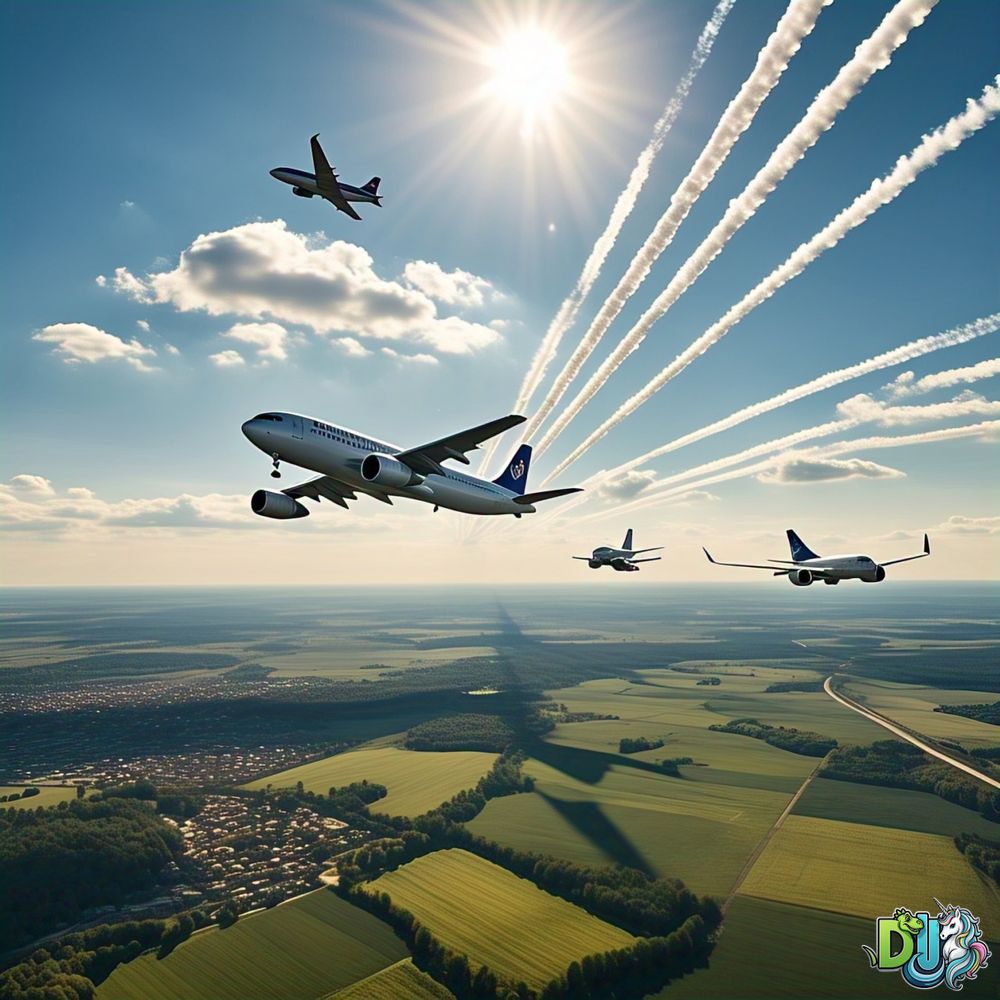Blog
How High Do Planes Fly?
How High Do Planes Fly?
Introduction
When you’re sitting in a commercial airplane, have you ever wondered just how high the aircraft is flying? The altitude of airplanes is a topic that many people find intriguing. Whether you’re curious about the exact height, the factors that influence it, or how it impacts the flight experience, understanding the cruising altitude is key to grasping the mechanics of modern air travel. In this article, we’ll explore everything you need to know about how high planes fly, the reasons behind it, and the benefits of high-altitude travel.
I. Standard Cruising Altitudes
Typical Altitudes for Commercial Aircraft
Commercial airplanes typically cruise at altitudes ranging from 31,000 feet to 38,000 feet. This range is considered optimal for the fuel efficiency and performance of most airliners. Flying at these altitudes allows the plane to avoid weather disturbances and enjoy the thinner atmosphere, which reduces air resistance and increases speed.
The altitude at which a plane flies depends on several factors, including the type of aircraft, weight of the plane, and air traffic control regulations.
Variations Among Different Aircraft Types
Not all planes fly at the same altitude. The altitude of airplanes can vary depending on their type and purpose. For example:
- Turboprop planes, which are often used for shorter regional flights, tend to fly at lower altitudes, typically between 15,000 and 25,000 feet.
- Private jets generally cruise at altitudes of 35,000 feet or lower, while helicopters tend to fly even lower, generally staying beneath 10,000 feet.
The cruising altitude for jets is usually higher due to the superior engine power and design that allows them to operate efficiently at greater heights.
II. Factors Influencing Flight Altitudes
Aircraft Design and Performance
The design of the airplane plays a significant role in determining its maximum altitude. Planes with larger, more powerful engines are capable of reaching higher altitudes. For instance, commercial jets like the Boeing 747 or Airbus A380 have engines that allow them to fly as high as 45,000 feet in some cases.
The structural limitations of the aircraft also determine the highest altitude at which it can safely operate. Aircraft must be equipped with pressurization systems to maintain a safe environment for passengers as the oxygen levels decrease with altitude.
Weather Conditions
Weather conditions can also impact the altitude at which an airplane flies. Pilots avoid flying through stormy weather, turbulence, and areas with strong winds, which is why they often adjust their cruising altitude based on weather reports and the regions they are flying over. The altitude range for airplanes is carefully selected to avoid encountering severe weather conditions, ensuring a smoother ride for passengers.
Air Traffic Control and Regulations
Flight altitudes are also regulated by air traffic control. Airplanes flying at higher altitudes must adhere to specific flight levels to maintain safety and order in the skies. Air traffic controllers assign flight levels to different aircraft to ensure that they do not come too close to one another during flight. These altitudes are also based on the type of flight route and regional regulations.

III. Benefits of High-Altitude Flight
Fuel Efficiency
Flying at high altitudes provides several benefits for airlines and passengers alike. One of the primary reasons airplanes fly at such high altitudes is for fuel efficiency. At higher altitudes, the thinner air reduces drag, allowing airplanes to use less fuel to maintain speed. This helps airlines reduce operational costs and, in turn, can result in lower ticket prices for passengers.
Speed and Time Savings
The airplane’s maximum altitude also contributes to its ability to travel faster. At altitudes between 30,000 and 40,000 feet, jets can fly at greater speeds due to the lower air resistance. This leads to shorter flight durations, which means passengers get to their destinations more quickly and efficiently.
Passenger Comfort
Flying at higher altitudes also leads to a smoother flight experience. The air at cruising altitude is less turbulent, and since planes fly above most weather systems, passengers are less likely to experience sudden changes in conditions. Additionally, flying at these altitudes ensures consistent cabin pressure, making the flight more comfortable for everyone on board.
IV. Risks and Limitations of High-Altitude Flight
Oxygen Levels and Hypoxia
One of the risks associated with flying at high altitudes is the decreased availability of oxygen. As the airplane climbs, the air pressure decreases, and the oxygen levels in the atmosphere drop significantly. To compensate for this, airplanes are equipped with pressurization systems to ensure passengers can breathe comfortably.
If an airplane experiences a pressurization failure, oxygen masks will deploy to ensure that passengers can breathe while descending to a lower, more breathable altitude. However, at extremely high altitudes, such as 60,000 feet (the maximum altitude for certain supersonic jets), the oxygen levels are so low that hypoxia—a condition caused by insufficient oxygen—becomes a serious concern for both pilots and passengers.
Aircraft Performance Challenges
Although high-altitude flight offers fuel efficiency and speed advantages, there are some performance challenges. As airplanes climb higher, engine efficiency tends to decrease due to the thinning air, which provides less oxygen to the engines. Therefore, airplanes must adjust their power settings as they ascend to avoid performance issues. Additionally, the structural integrity of the aircraft can be tested at extreme altitudes, as the difference in pressure between the cabin and the outside air can be substantial.
Emergency Situations
In the rare case of an emergency, high-altitude flight can pose challenges. For instance, in the event of depressurization, it can take a while for an aircraft to descend to a lower altitude where oxygen levels are sufficient. This descent, though critical, can take several minutes, during which time the crew and passengers may experience symptoms of hypoxia.

V. Historical Context and Evolution
Early Aviation Altitudes
In the early days of aviation, planes flew at much lower altitudes. In fact, many of the first aircraft were only capable of flying at altitudes between 5,000 and 10,000 feet. This was primarily due to the limited engine power and poor aerodynamics of early planes. As aviation technology improved, so did the maximum altitudes that aircraft could reach.
Modern Developments
In modern aviation, particularly with the advent of supersonic jets like the Concorde, aircraft maximum altitude capabilities have reached new heights. The Concorde, for instance, cruised at altitudes of up to 60,000 feet, far higher than most commercial planes. Today, with advancements in engine technology and aircraft design, modern jets can fly at altitudes that were once considered impossible.
VI. Case Studies
Concorde Supersonic Jet
The Concorde, a supersonic passenger jet, is a prime example of high-altitude flight. While most commercial planes fly between 30,000 and 40,000 feet, the Concorde was capable of reaching altitudes of up to 60,000 feet, traveling at speeds over Mach 2. This high-altitude flight allowed the Concorde to cut flight times in half, offering passengers a quick and luxurious way to travel long distances.
High-Altitude Research Flights
Certain scientific research flights also push the limits of altitude. For example, specialized aircraft used for high-altitude research have reached near-space altitudes, above 80,000 feet. These flights gather critical data on atmospheric conditions, which is essential for understanding climate change and other environmental factors.
VII. Future Trends in Aviation Altitudes
Supersonic and Hypersonic Flight
As technology advances, the possibility of supersonic and even hypersonic flights is becoming more realistic. Supersonic jets, which can travel faster than the speed of sound, could revolutionize the way we think about air travel. These aircraft will need to operate at even higher altitudes than current commercial flights, potentially above 50,000 feet.
Environmental and Regulatory Factors
The future of high-altitude aviation also faces challenges related to the environment and regulations. Airlines are increasingly looking for ways to reduce their carbon footprint while flying at high altitudes. Emerging technologies, such as electric aircraft, may provide solutions to reduce emissions, ensuring that the aviation industry can continue to operate in a more sustainable manner.

Conclusion
Summary of Key Points
Understanding the altitude at which planes fly is essential for both travelers and those interested in aviation. The standard cruising altitude for most commercial aircraft lies between 31,000 and 38,000 feet, but various factors such as aircraft type, weather, and regulations influence this height. High-altitude flight offers several advantages, including fuel efficiency, faster travel, and greater comfort for passengers.
Implications for Passengers and the Aviation Industry
For travelers, knowing the typical cruising altitude of planes can help alleviate any concerns about the flight experience. Airlines, too, will continue to innovate, seeking ways to optimize flight altitudes for maximum efficiency and sustainability. Whether it’s a short regional flight or a long-haul international journey, understanding how high planes fly enhances the overall aviation experience.
Frequently Asked Questions (FAQs)
Q1: How high do commercial airplanes fly?
A1: Commercial airplanes typically cruise at altitudes between 31,000 and 38,000 feet.
Q2: Why do planes fly so high?
A2: Flying at high altitudes allows airplanes to reduce air resistance, improve fuel efficiency, and travel faster.
Q3: Can planes fly at 50,000 feet?
A3: Some aircraft, such as supersonic jets, can reach altitudes of up to 60,000 feet, but most commercial planes do not exceed 40,000 feet.
Q4: What happens if a plane flies too high?
A4: If a plane flies too high, the air becomes too thin for the engines to operate efficiently. Planes are designed to fly at specific altitudes, and exceeding these limits can affect performance and safety.
Q5: What is the maximum altitude for a commercial jet?
A5: The maximum altitude for most commercial jets is around 45,000 feet.
Please visit Dinounicorn.com or Freshmilktee.com to support us. Thank you!
 Skip to content
Skip to content

